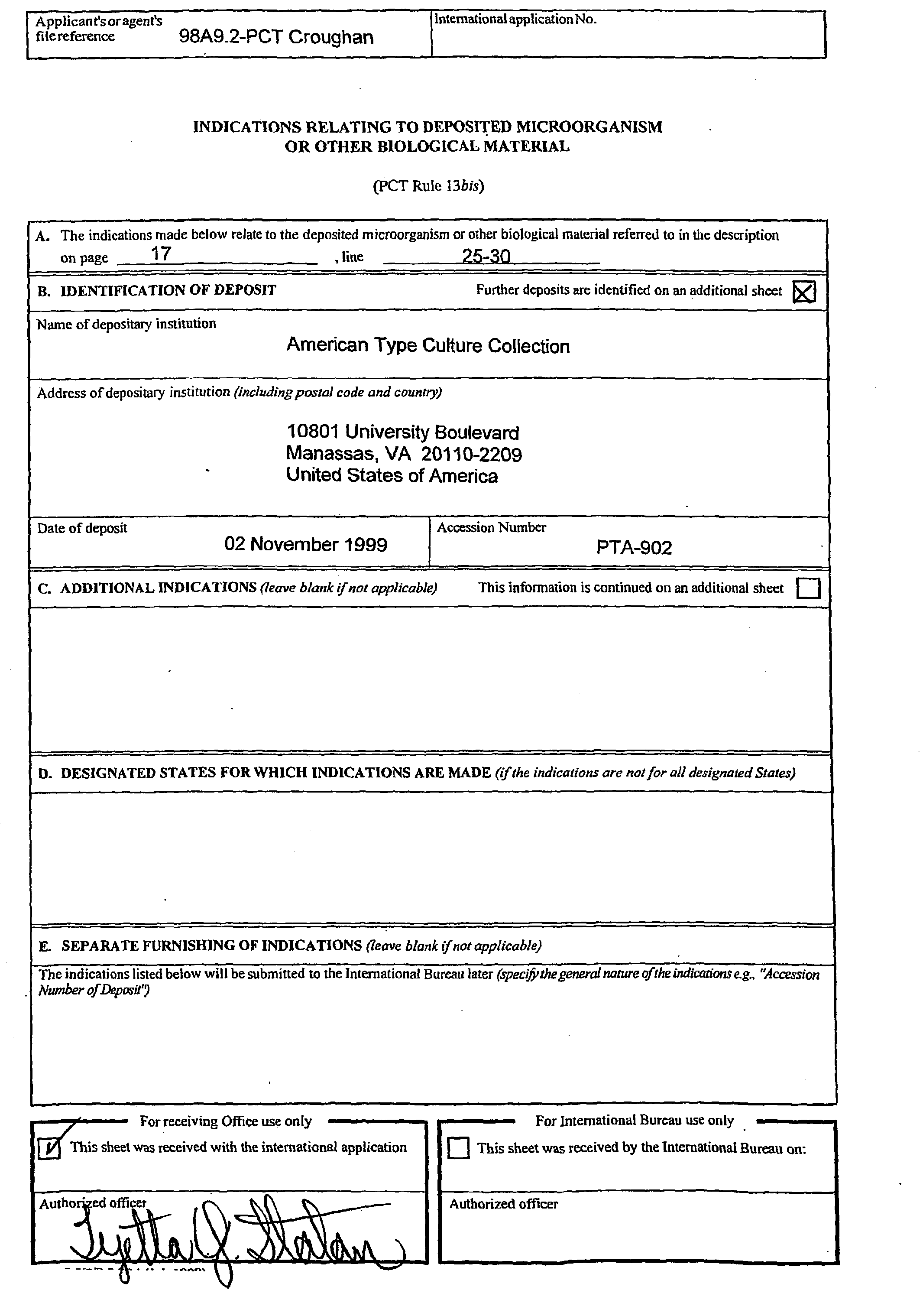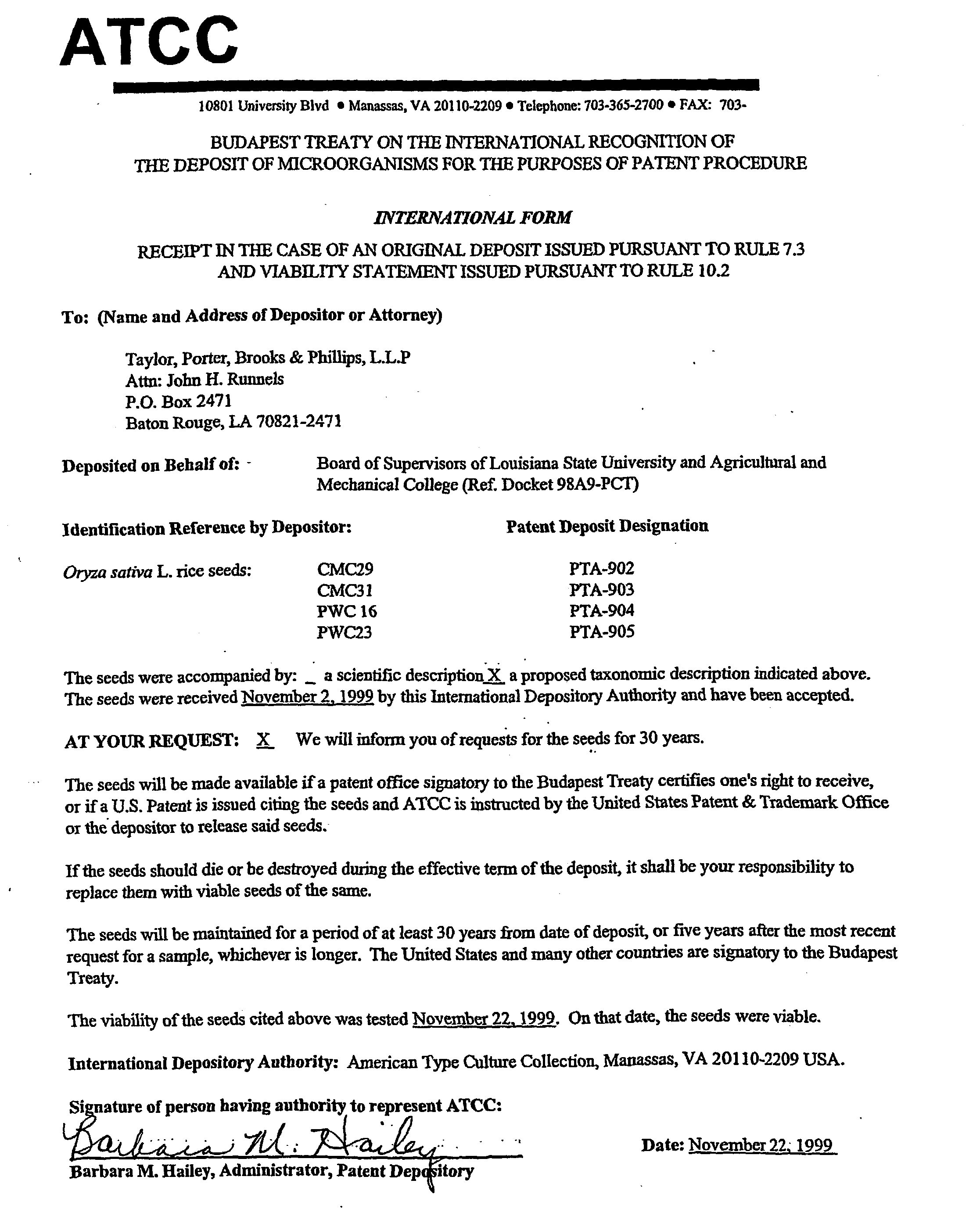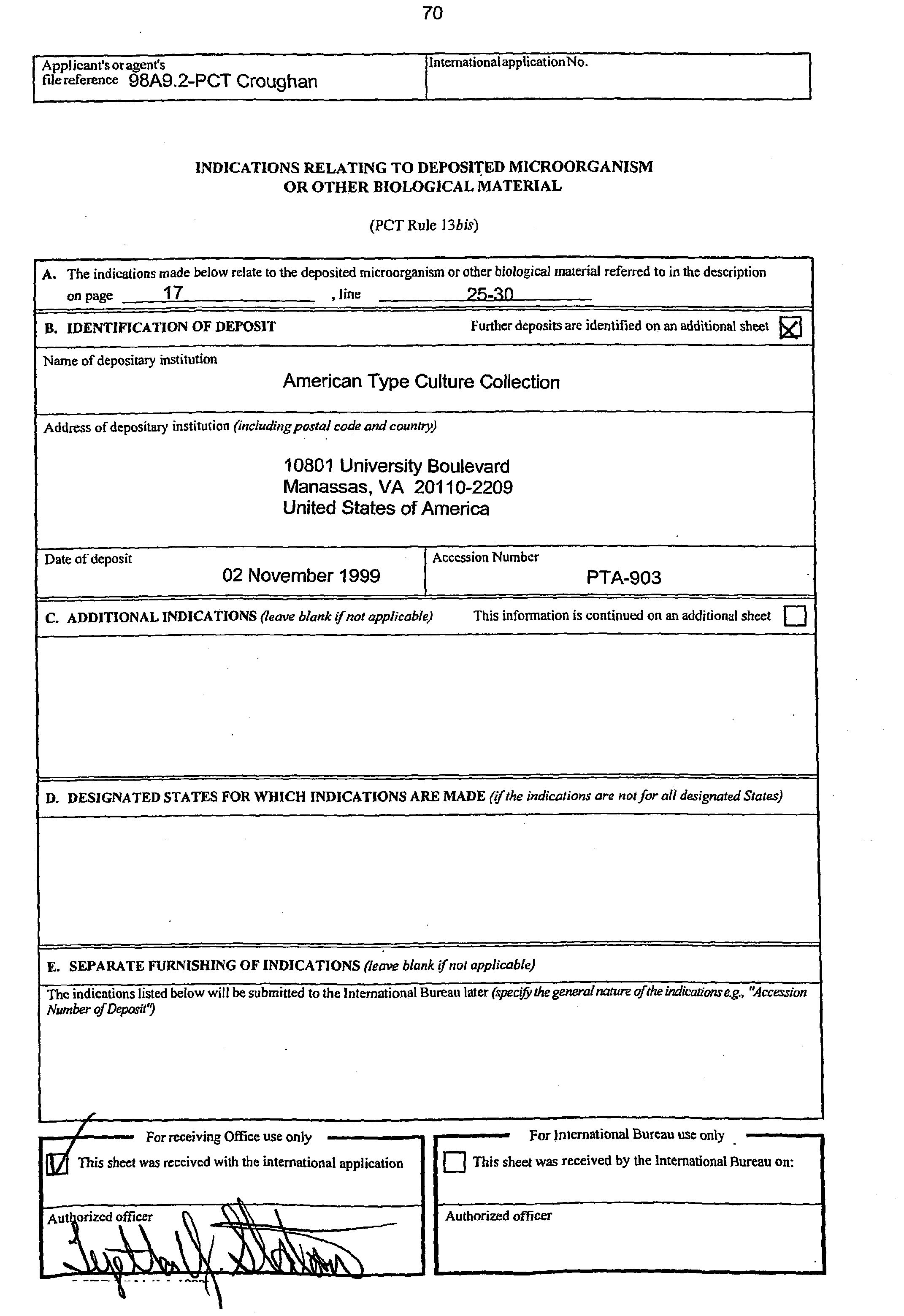Resistance to acetohydroxycid synthase-inhibiting herbicides
- Summary
- Abstract
- Description
- Claims
- Application Information
AI Technical Summary
Benefits of technology
Problems solved by technology
Method used
Image
Examples
examples 1-15
[0061] Approximately 52 million mutated (M.sub.2) rice seed were screened. The mutated seed were developed by soaking a total of 340 pounds of seed (M.sub.1), of the rice cultivars "Cypress" or "Bengal," in a 0.175% (by weight) aqueous solution of EMS. Approximately 170 lb. of rice were exposed to EMS for 16 hours; approximately 85 lb. were exposed for 24 hours; and approximately 85 lb were exposed for 35 hours. Seed from the three exposure regimens were pooled for the screening experiments described below.
[0062] Following EMS treatment, the M.sub.1 seed were thoroughly rinsed with water and drained before being planted by broadcast-seeding into shallow water, water that was drained 24 hours later. The field was re-flooded three days later, and the field was maintained in a flooded condition until it was drained for harvesting. The harvested M.sub.2 seed were stored over the winter, and plants grown from the M.sub.2 seed were screened for herbicide resistance the following spring. F...
examples 16-27
[0069] Approximately 60 million additional mutated (M.sub.2) rice seed were screened. The mutated seed were developed by soaking a total of 300 pounds of seed (M.sub.1) of the rice cultivar "Cypress" in a 0.175% (by weight) aqueous solution of the mutagen EMS for 23 hours.
[0070] Following EMS treatment the M.sub.1 seed were thoroughly rinsed with water and drained before being planted by broadcast-seeding into shallow water, water that was drained 24 hours later. The field was re-flooded three days later, and the field was maintained in a flooded condition until it was drained for harvesting. The harvested M.sub.2 seed were stored over the winter, and plants grown from the M.sub.2 seed were screened for herbicide resistance the following spring. Following broadcast-seeding and shallow soil incorporation of approximately 60 million M.sub.2 seed, a post-emergence application of imazapic (trade name Cadre.TM.) at 0.125 lb ai / A was sprayed on half the field, and a post-emergence applica...
example 28
[0075] Mutations were induced in seeds of ten rice varieties by exposure either to gamma rays or to EMS. Ten-pound lots of seed of each variety were subjected to 25 k-rad of gamma irradiation from a Cobalt-60 source at the Nuclear Science Center, Louisiana State University, Baton Rouge, La. prior to planting. An additional ten pounds of seed of each variety was divided into three equal portions; and each portion was soaked for 16 hours in either 0.1%, 0.5%, or 1% EMS immediately prior to planting. Several hundred pounds of seed were harvested from plants grown from the seeds subjected to these mutagenic treatments.
[0076] The following spring the harvested seed was planted in strips in a field planting occupying a total of about three acres. At the 3-4 leaf stage of seedling development, herbicides were applied to screen for herbicide-resistant mutants. Half of the seedlings of each variety were sprayed with a 2.times. treatment of nicosulfuron, and half were sprayed with a 2.times. ...
PUM
| Property | Measurement | Unit |
|---|---|---|
| Fraction | aaaaa | aaaaa |
| Electrical conductance | aaaaa | aaaaa |
| Mass | aaaaa | aaaaa |
Abstract
Description
Claims
Application Information
 Login to View More
Login to View More - R&D
- Intellectual Property
- Life Sciences
- Materials
- Tech Scout
- Unparalleled Data Quality
- Higher Quality Content
- 60% Fewer Hallucinations
Browse by: Latest US Patents, China's latest patents, Technical Efficacy Thesaurus, Application Domain, Technology Topic, Popular Technical Reports.
© 2025 PatSnap. All rights reserved.Legal|Privacy policy|Modern Slavery Act Transparency Statement|Sitemap|About US| Contact US: help@patsnap.com



